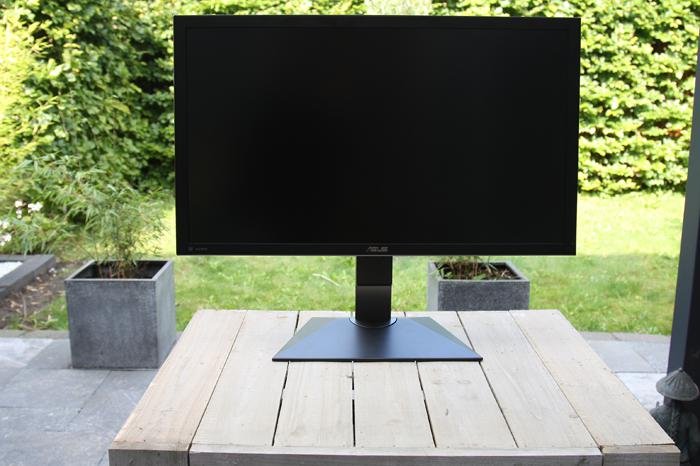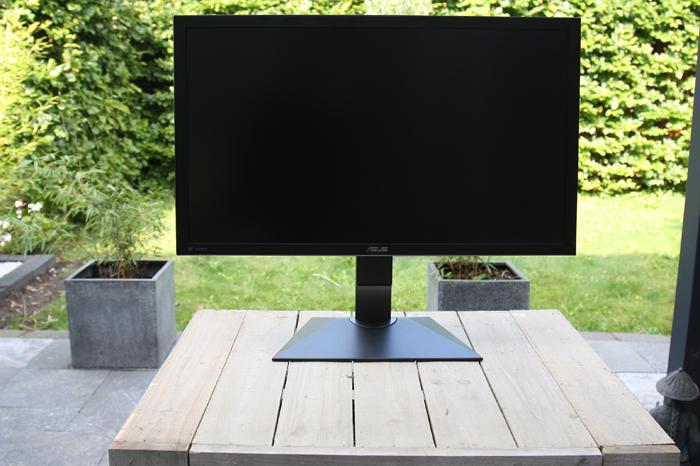Ultra HD Monitor
The Ultra HD Monitor
So credit where credit is due, ASUS was the first to jump into releasing an UHD monitor, the PQ321 monitor used today can handle 3840 x 2160 @60Hz. Though ASUS beefed up the specs and features, really this is an Sharp panel and ASUS tags it as an IGZO panel. The PQ321 is a True native 4K UHD Monitor allowing Ultra HD at a 3840 x 2160 resolution. They do apply a trick though, basically the screen exists out of two tiled screens making that big whopper of a resolution. Tiled monitors are really two displays and as such the driver configures surround or eyefinity using a new VESA standard EDID — DisplayID v1.3.
To get a grasp of that 4K resolution have a peek at the screenshot above, 4K is the same as four Full HD displays stacked side-by-side. So yeah, you'll be needing serious amounts of GPU horsepower and i can easily show you that in numbers:
- 1280x720 = 0.9 MPixels
- 1600x1200 = 1.9 Mpixels
- 1920x1080 = 2.0 MPixels
- 2560x1440 = 3.7 MPixels
- 3840 x 2160 = 8.2 Mpixels (!)
- 7680 × 4320 = 33.1 megapixels (future stuff)
Yes, suffice to say we'll be needing twice the number of graphics cards that can drive 2560x1440 at acceptable framerates. Now, the PQ321 is a 31.5-inch LED-backlit 4K Ultra HD display (140 pixels-per-inch) with 16:9 aspect ratio. It supports 10-bit RGB ‘deep color’ for more vibrant images and natural transitions between hues. IGZO then, the PQ321 uses Indium Gallium Zinc Oxide opposed to traditional amorphous silicon for the active layer of its LCD panel. IGZO panels support much smaller transistors than amorphous silicon, which in turn results into smaller pixels. Thew display has 176-degree wide viewing angles on both vertical and horizontal planes minimize onscreen color shift, while the 350cd/m² brightness rating and 8ms gray-to-gray response time ensure smooth, bright, and vibrant moving visuals. IGZO technology also gives reduced energy consumption compared to amorphous silicon and reduces bulk — at 35mm at its thickest point, the PQ321 is the thinnest 4K UHD monitor available today.
Comprehensive video inputs for UHD content
The ASUS PQ321 True 4K UHD Monitor features DisplayPort and US models offer dual-HDMI ports inputs with Picture-by-Picture support. Built-in 2W stereo speakers remove the need for additional desktop clutter and, in addition to being wall-mountable, the monitor stand offers full height, swivel, and tilt adjustment.
So that you know, these puppies cost 3500 USD a piece.
| Display Size | 31.5-inch IGZO |
| Resolution | 3840 x 2160 |
| Aspect Ratio | 16:9 |
| Brightness | 350 cd/m2 |
| Contrast Ratio | 800:1 |
| Response Time | 8ms (Gray to Gray) |
| Viewing Angle | 176° vertical / 176° horizontal |
| Display Type | IGZO (Indium Gallium Zinc Oxide) |
| Connectors | 2 x HDMI; DisplayPort; RS-232C; 3.5mm mini-jack |
| Power Consumption | 93W (Typical); <6W (Power Saving); <1W (Power Off Mode) |
| Speakers | 2 x 2W stereo RMS speakers |
| Stand | Tilt (+25 degrees to 5 degrees); Swivel; Height |
| I/O Ports | N/A |
| Dimensions (with stand) | 750 mm x 489 mm x 256 mm (HxWxD) / 29.5 inches x 19.2 inches x 10.1 inches |
| Weight | 13 kg / 28.7 lbs |
| Included Accessories | Cable clamp; power cord; power adapter; DisplayPort cable; Warranty card; RS-232C conversion cable; Setup manual |
| Warranty | 3 years casing; 3 years panel; 1 year parts and accessories (optional) |
| Price | $ 3,499 |
Any problems ?
Well the setup is going to be a little weird. See no graphics card can really output UHD over a single HDMI connector. So at this moment the HDMI Forum just version 2.0 of the HDMI Specification. This latest HDMI Specification, the first to be developed by the HDMI Forum, offers a significant increase in bandwidth (up to 18 Gbps) to support new features such as 4K@50/60 (2160p). We're not there yet though hence this monitor has two HDMI inputs to drive the two panels.
With the stand attached, the PQ321 measures 750 mm (W) by 489 mm (H) by 256 mm (D), or 29.5 inches (W) by 19.2 inches (H) by 10.1 inches (D).
So basically we'll drive two HDMI cables from the graphics card(s), then with a supported driver we can achieve our beefy and tasty 3840 x 2160 resolution. Yep, the technology is new and is work in progress alright. The good news, DisplayPort is ready to support Ultra High Definition though. For both AMD and NVIDIA we'll show you that.
First impression ?
Honestly, it's like the SD-to-HD revolution all over again. The response time might be a little more then average at 8ms, then again for a screen resolution of this proportion, but not at all bad. There one more downside though to current 4K technology, the refresh rate is capped at 60Hz whereas 120Hz is really taking off for hardcore FPS gamers.




